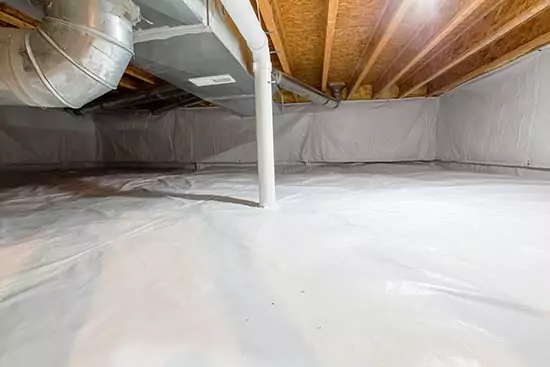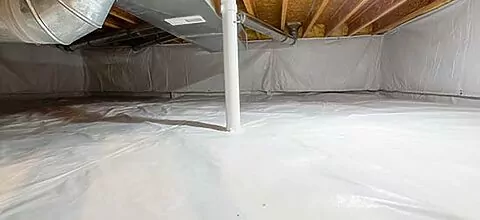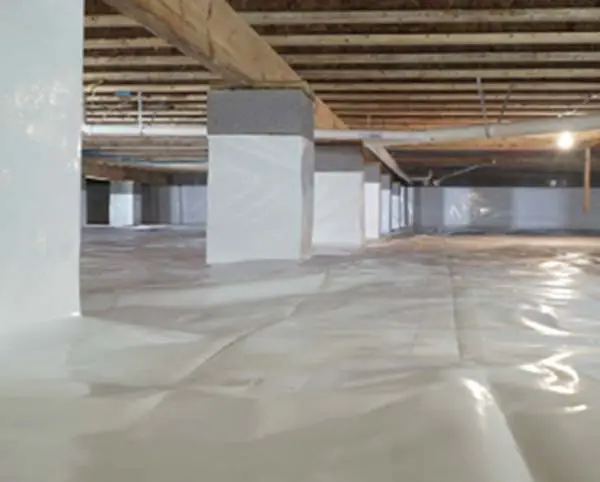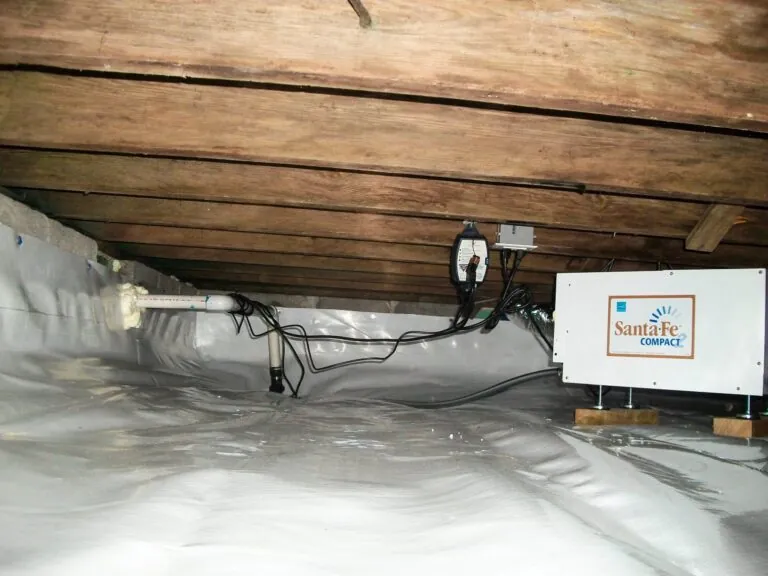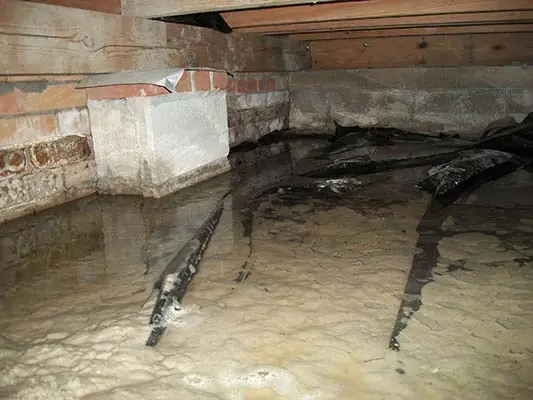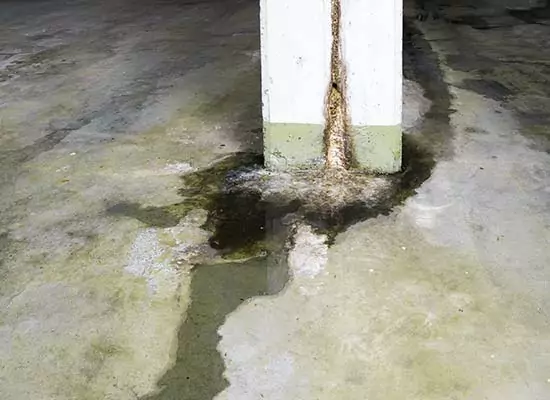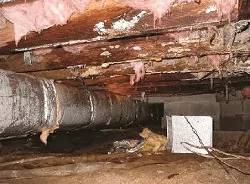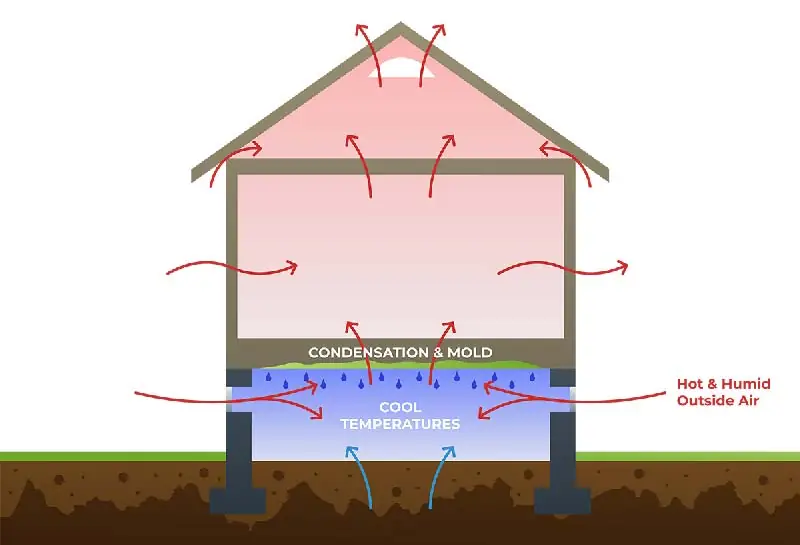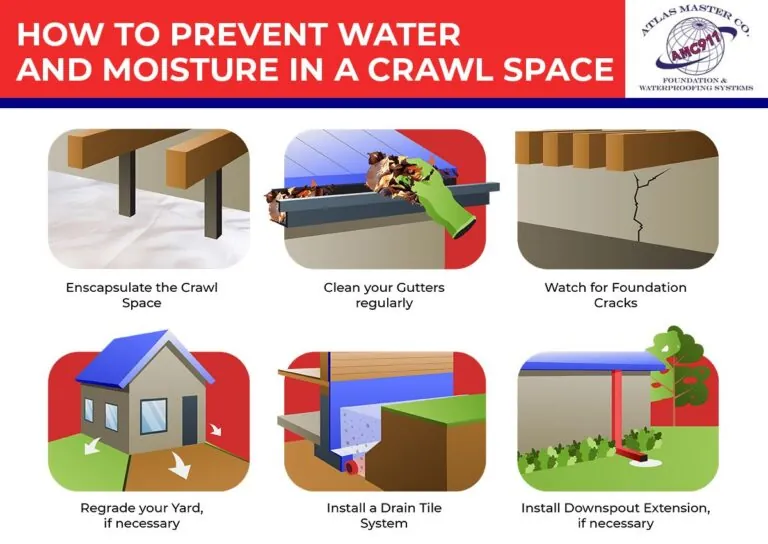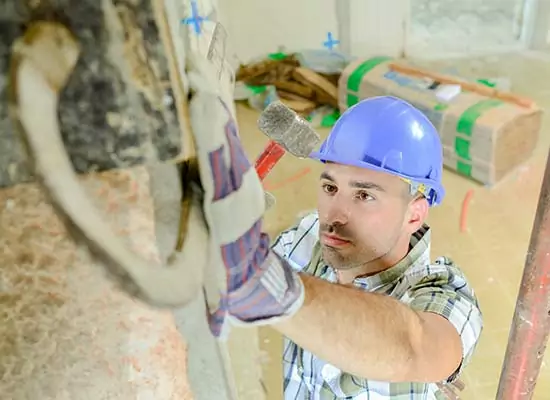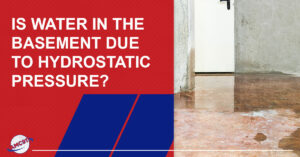Is water in a crawl space after heavy rain normal? It depends on what you mean by “normal.” If by “normal” you mean something you don’t need to worry about, then no. Water in a crawl space after heavy rain is not normal. It’s a sign of an immediate problem with possible long term effects that you need to worry about it.
This article will go over what you need to know about water in a crawl space after heavy rain, water in a crawl space in general, ways water gets into a crawl space, how to prevent water from getting into your home’s crawl space, and more.
First of all, what is a crawl space?
If your home sits atop a crawl space foundation, it sits from 1.5 to 3 feet off the ground. This creates an empty area underneath the foundation known as the “crawl space.” The crawl space is just big enough for an adult to crawl around in. Crawl space foundations have been popular for decades because they offer easy access to the home’s plumbing and electrical wiring. If a crawl space is encapsulated (more on this below), it can even be used for storage.
Homes in the Greater Hampton Roads area are primarily built on crawl space foundations.
Is water in a crawl space after heavy rain normal?
Water in a crawl space after heavy rain means you have a problem with drainage around your home’s foundation. Is it normal? Let’s say it’s pretty common. However, that doesn’t mean you should ignore it.
Water in a crawl space can cause a lot of trouble for your home’s foundation because it causes mold to form, which will rot away at the wood structures in your crawl space and attract wood-eating pests, which will cause even more damage. (We’re going to talk more about this in just a bit.)
If the soil around your home’s foundation is prone to erosion, water in a crawl space can cause damage simply by washing away the soil around and under the foundation. This exposes more of the foundation wall than should be exposed and destabilizes the piers in the crawl space as well.
How does water get into a crawl space?
Your crawl space can get wet via:
Leaky drain or water pipes
Is the water directly under a bathroom or kitchen? If the water in the crawl space is from leaky plumbing, that’s a good thing because it will probably be less expensive to fix than if the problem is being caused by groundwater.
Excess moisture in the soil around the foundation
he excess moisture in the soil could be caused by various things, including – but not limited to – poor drainage, improper grading, clogged gutters, short downspouts, a high water table, and heavy downpours.
Hydrostatic pressure pushes water through foundation walls
When there’s excess moisture in the soil around the foundation, hydrostatic pressure builds up and pushes against the foundation walls. If there are tiny cracks in the wall, hydrostatic pressure will force the water through the cracks and into the crawl space. Hydrostatic pressure can even cause cracks in foundation walls.
Once the soil inside the crawl space is moist, condensation will form, leading to mold and mildew. For more information, see Don’t DIY. Hire a professional to inspect your crawl space.
Signs you might have a wet crawl space
Signs you might have water in your crawl space include:
- The humidity inside your home is higher than it should be.
- Your hardwood floor is warped.
- There’s visible wood rot on the wooden structures in your crawl space.
- The wooden structures in your crawl space show damage caused by wood-eating pests like termites.
- There’s visible mold on the wooden structures in your crawl space.
- Your home smells musty.
- Allergies respiratory problems
How a wet crawl space can affect your home?
Water in a crawl space can negatively affect your home in the following ways:
Wood rot
Moisture in a crawl space causes wood rot which weakens the crawl space’s beams, joists, etc. Over time this will compromise the home’s structural integrity leading to costly repairs.
Decreased air quality in your home’s living area
Air from the crawl space flows up into your home’s living area via the stack effect. If this air is humid, your home will be harder to heat and cool. In other words, your energy costs will be higher. Also, mold in your crawl space air means the air in your home will also contain mold spores. This could cause health problems for anyone living in the home.
Water attracts pests
Water in crawl spaces attracts wood-eating pests and pests who leave behind droppings that could contain dangerous pathogens. Keep this in mind as you consider that a certain percentage of air in your crawl space flows up and into your home.
Weakening of foundation
A wet crawl space can weaken the foundation by causing soil movement under the foundation. For example, the piers holding up the house start to sink into the soggy ground. This causes a host of problems including doors and windows that don’t open properly, cracked walls, etc.
Preventing a wet crawl space is easier than repairing the damage caused by a wet crawl space.
How to prevent water and moisture in a crawl space?
You can prevent water and moisture in a crawl space by getting groundwater under control. The best way to do that is to install a drain tile system along with a sump pit and sump pump.
A drain tile system works by collecting excess water in the soil and channeling it into the sump pit. When the pit fills with water, the sump pump turns on and releases the water away from the foundation.
If you want to kick it up a notch, you can also have your crawl space encapsulated. Crawl space encapsulation involves covering the walls and floor of the crawl space with a thick vapor barrier, effectively sealing off the crawl space from the dirt floor. A dehumidifier is commonly added along with encapsulation. The result is a crawl space that’s clean and dry enough to use for storage.
Other ways to control groundwater around your home’s foundation include:
Regrade your yard, if necessary
The yard around your home should slope away from the foundation. This ensures that water drains away from the foundation and not toward it.
Clean your gutters regularly
Clogged gutters can cause water to flow over the side of your home and into the soil around the foundation.
Use downspout extensions
Downspouts that are too short will release water too close to the foundation. Downspout extensions channel the water away from the foundation before releasing it.
Install an underground downspout along with a bubbler pot
Another type of downspout extension involves channeling water into an underground downspout connected to a bubbler pot (also called a “pop up emitter”) situated 10 feet or so away from your foundation. When the bubbler pot fills with water, it pops up and releases it. (also something called a catch basin…with a pump)
Don’t plant water-hungry vegetation next to the foundation
When you water them, you’ll just be adding more water to the soil.
Waterproofing membrane
This can be applied to the outside of the foundation wall for extra protection.
Vent covers
Vent covers prevent moisture from entering the crawl space.
Mold fogging
This gets rid of existing mold.
Who to call for water in a crawl space?
While we understand the desire to save money, it’s best to call an experienced, licensed crawl space repair and waterproofing professional unless you like crawling around dark, damp, claustrophobic spaces. Whatever you do, don’t enter your crawl space without breathing protection and heavy protective clothing.
Your home’s crawl space may be out of sight, but that doesn’t mean it should be out of mind. Contact us today for a free inspection and repair estimate if you have water in your crawl space and you’re in our service area – Hampton Roads and the surrounding areas in Virginia.

